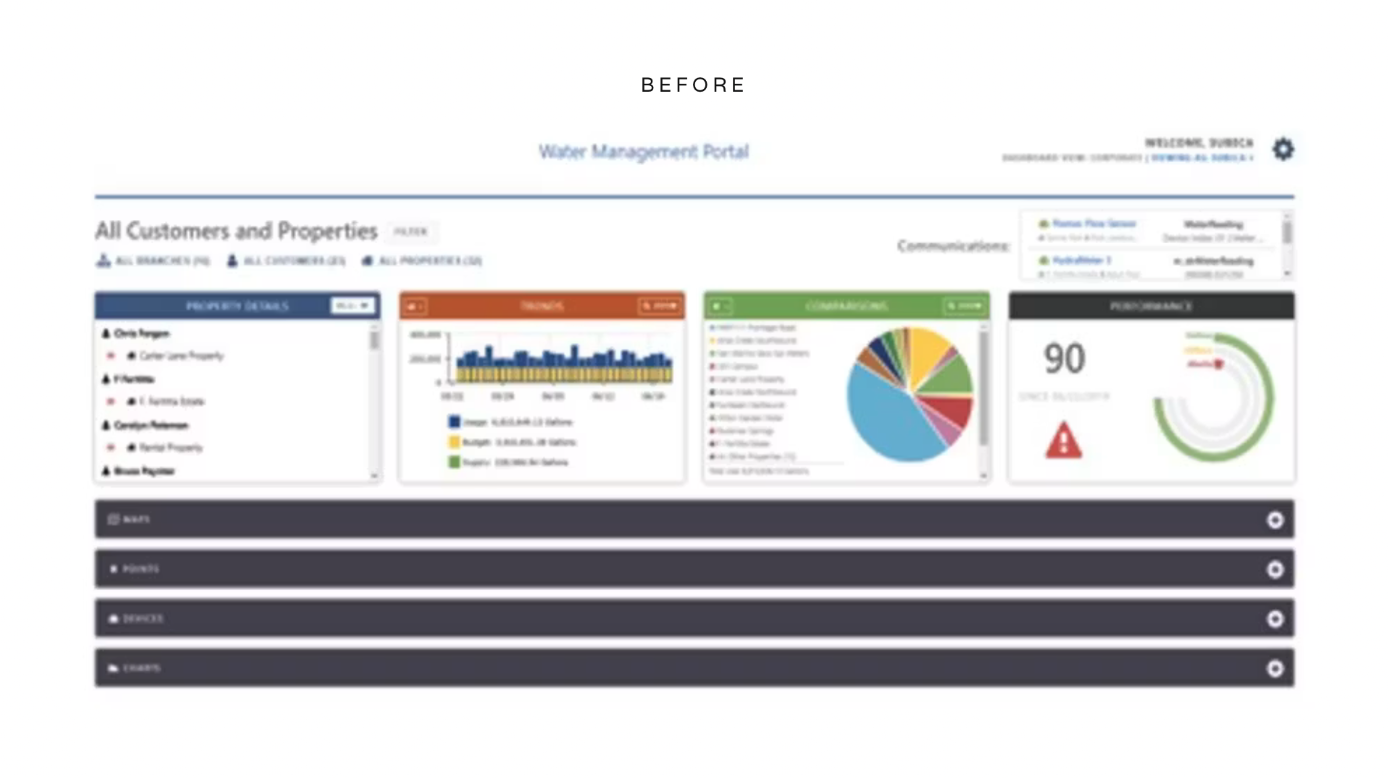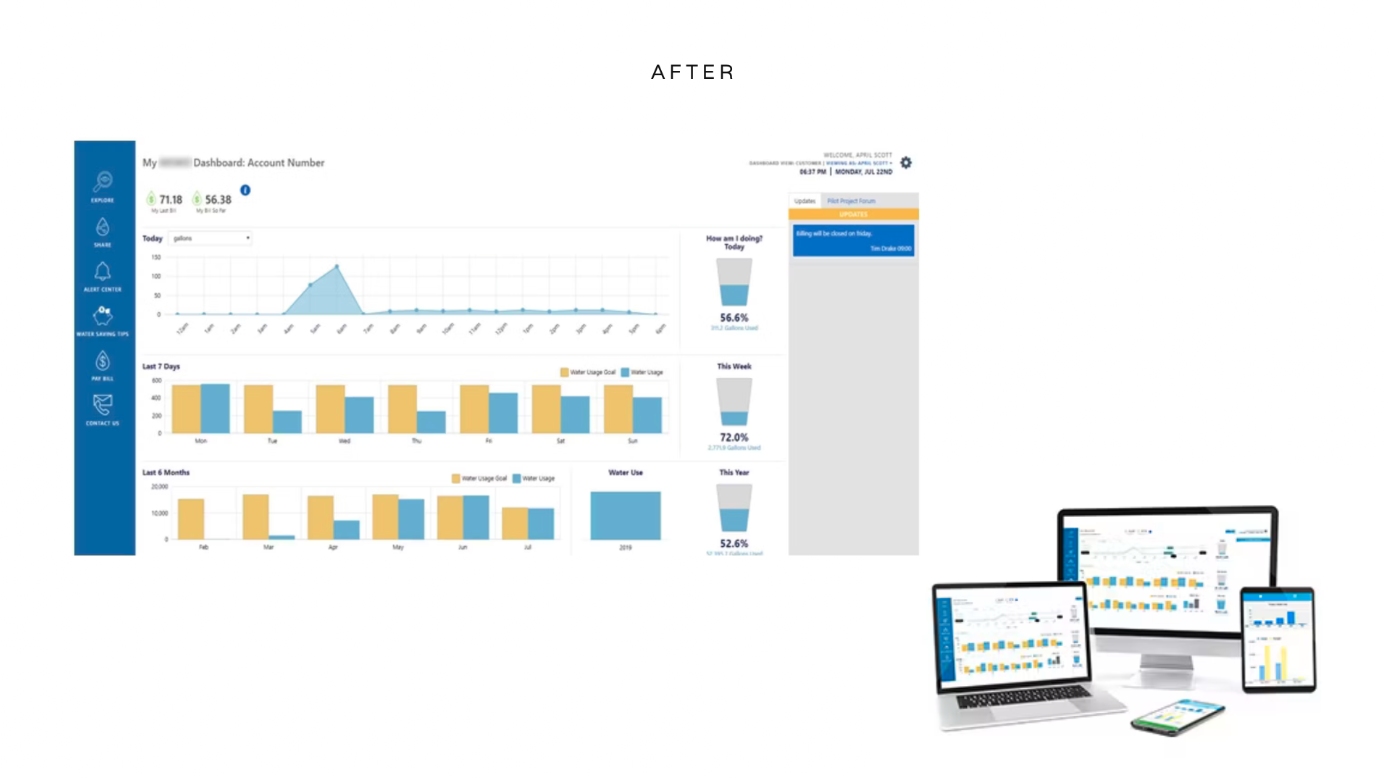Water Management IoT
Redesigned a complex water management IoT software for multiple stakeholders, balancing expert features with consumer ease-of-use experience.


The Challenge
I was tasked with redesigning a complex water management IoT software that needed to serve multiple stakeholders with different needs. The project faced significant constraints: High product complexity with various distinct use cases, multiple stakeholders with competing priorities, limited engineering resources, a tight deadline for delivery, and the need to balance expert functionality with consumer-friendly design.
My Approach
Discovery
First, I conducted stakeholder interviews to understand the varying needs across user groups. I mapped out the primary use cases and identified pain points in the existing system. Through collaborative workshops, I prioritized features based on business impact and technical feasibility.
Strategy
Given the constraints, I developed a modular design system that would allow for component reuse to speed up development, create a responsive layout that worked across devices, implement progressive disclosure to manage complexity, and focus on data visualization that served both experts and casual users.
Iteration
Working closely with product and engineering teams, I created low-fidelity wireframes to align on information architecture, developed interactive prototypes for key user flows, conducted usability testing with representatives from different user groups, and iterated based on feedback and technical constraints.
The Solution
The final design delivered:
- A customizable dashboard that prioritized the most critical water management metrics
- Simple, intuitive data visualizations that made complex information accessible
- Responsive design that maintained functionality across devices
- Progressive disclosure that allowed expert users to access advanced features
- Streamlined workflows that reduced time-to-insight
Results
Despite the tight timeline and limited resources, the redesigned dashboard:
- Increased user engagement by 40%
- Reduced training time for new users by 60%
- Maintained all critical functionality for expert users
- Met technical implementation requirements
- Launched on schedule
Key Learnings
- Strong cross-functional collaboration when resources are limited
- Modular design systems to accelerate development
- Finding the balance between simplicity and functionality
- Prioritization based on both user needs and technical constraints